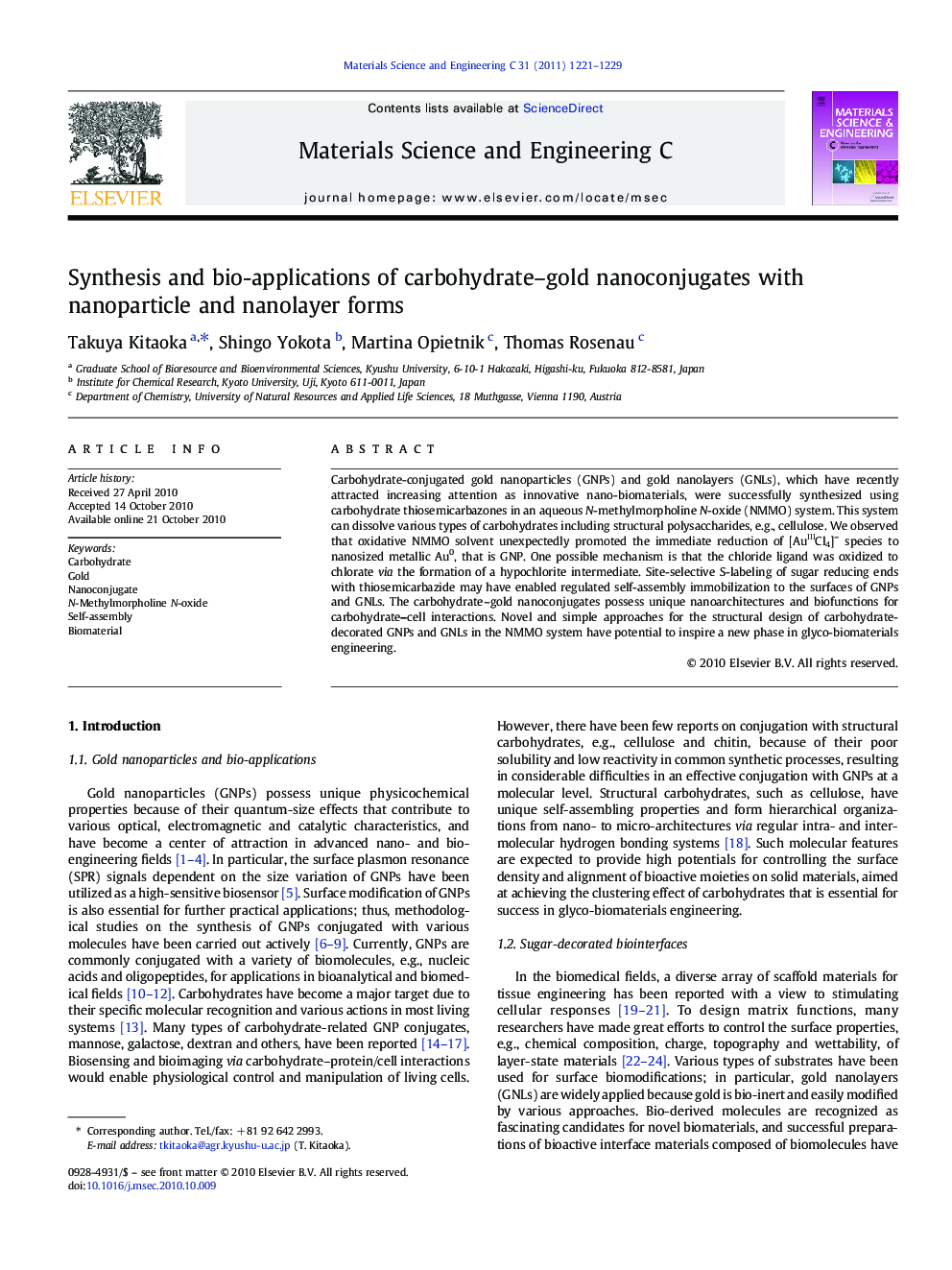| Article ID | Journal | Published Year | Pages | File Type |
|---|---|---|---|---|
| 1429772 | Materials Science and Engineering: C | 2011 | 9 Pages |
Carbohydrate-conjugated gold nanoparticles (GNPs) and gold nanolayers (GNLs), which have recently attracted increasing attention as innovative nano-biomaterials, were successfully synthesized using carbohydrate thiosemicarbazones in an aqueous N-methylmorpholine N-oxide (NMMO) system. This system can dissolve various types of carbohydrates including structural polysaccharides, e.g., cellulose. We observed that oxidative NMMO solvent unexpectedly promoted the immediate reduction of [AuIIICl4]– species to nanosized metallic Au0, that is GNP. One possible mechanism is that the chloride ligand was oxidized to chlorate via the formation of a hypochlorite intermediate. Site-selective S-labeling of sugar reducing ends with thiosemicarbazide may have enabled regulated self-assembly immobilization to the surfaces of GNPs and GNLs. The carbohydrate–gold nanoconjugates possess unique nanoarchitectures and biofunctions for carbohydrate–cell interactions. Novel and simple approaches for the structural design of carbohydrate-decorated GNPs and GNLs in the NMMO system have potential to inspire a new phase in glyco-biomaterials engineering.
